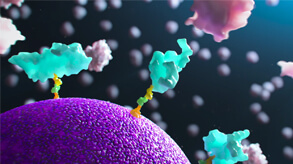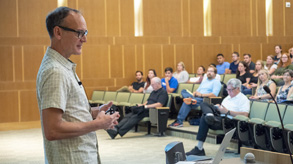The plasma proteome as a cardiovascular disease risk assessment tool in cancer survivors
Background
- Cardiovascular disease (CVD) is the most common cause of non-cancer death in individuals following a cancer diagnosis
- Cancer survivors have up to a 37% increased risk of incident CVD than those without cancer. This elevated risk is sustained even 20 years following cancer diagnosis
- Increased cardiovascular risk in cancer survivors is attributed to several factors:
- cardiotoxic effects of chemotherapy and radiotherapy
- physiologic effects of cancer such as inflammation and oxidative stress
- common biological predisposition such as genetics
- shared lifestyle risk factors including smoking, diabetes, and obesity
- While American and European societies of cardiology recommend screening for CVD following cancer treatment, there is currently no validated risk prediction tool to accurately assess CVD risk in adult cancer survivors (beyond ASCVD score)
Methods
- A previously validated 27-protein prognostic model to predict the four-year risk of a CV event (myocardial infarction, stroke/transient ischemic attack, heart failure hospitalization, death) was validated in two additional cohorts for this new intended use population
- BASEL VIII is a large prognostic and diagnostic study aiming to advance the non-invasive diagnosis of obstructive coronary artery disease (CAD). The dataset includes clinical data and EDTA plasma for 569 participants with a medically adjudicated prior history or active malignancy of any type of cancer
- ARIC is a multi-site prospective cohort study designed to investigate the etiology and natural history of atherosclerotic diseases. The ARIC visit 3 dataset used includes clinical data and EDTA plasma for 337 participates with a medically adjudicated prior history or active malignancy of any type of cancer
- Model discrimination in this new intended use population was assessed using 4-year area under the curve (AUC) and the time-independent C-index (calculated using all available follow-up data)
- Model performance was assessed in the entire cohort, and separately in adults aged 40 and older with and without a history of cardiovascular disease
Results
27-protein CVD risk model can accurately stratify and discriminate patient risk in cancer survivors
The 27-protein CVD risk model accurately predicts CV event risk in adult cancer survivors regardless of cardiovascular history
- Performance of the 27-protein model was comparable between participants with no prior history of CVD (AUC: 0.71; C-Index: 0.69) and stable CVD (AUC: 0.72; C-Index: 0.69)
- Observed 4-year event rates in cancer survivors were higher than event rates in a cohort of participants with elevated CVD risk factors (10.4% vs 5.6% Low; 16.8% vs 11.2% Medium-Low; 31.5% vs 20.2% Medium-High; and 58.2% vs 43.4% High, respectively)
Alignment between 27-protein CVD risk model predictions and observed event rates
Calibration of observed vs expected event rates by risk quantile
- The 27-protein CVD risk model overpredicts risk at the high end of the range, however these participants are at very high risk for a CV event (58.2%) within the next 4 years
- Event predictions in the lower and mid-range, where accuracy is most important, are reasonably aligned with observed event rates
27-protein CVD risk model outperforms current standard of care
The 27-protein CVD risk model is superior to other risk prediction models
- Age alone does not drive CV event risk in ARIC and BASEL cancer survivors
Analyses of event type confirmed that cancer or other non-CV related deaths were not driving model performance
- The majority of participants (57%) did not die of cancer or other non-CV related deaths
- 44% of participants experienced a non-fatal CV event
- All event types were represented across risk bins
Conclusions
- Cancer survivors in this cohort were distinguished into distinct cardiovascular risk bins with 4-year CV event rates as high as 58.2%
- The 27-protein CVD risk model is superior to the current standard of care for predicting 4-year CV event risk in a cohort of cancer survivors (C-index: 0.71 vs 0.66 and AUC: 0.74 vs 0.62 for proteomic model vs ASCVD equation, respectively)
- Prognostic protein testing may provide a novel tool for CVD risk assessment in adult cancer survivors
Authors
Emma Troth1
Matthew Ayala1
Jessica Chadwick1
Erin Hales1
Michael A. Hinterberg1
Jessica N. Kuzma1
Clare Paterson1
Rachel Ostroff1
Joan E. Walter2
Christian Mueller2
Josef Coresh3
1SomaLogic Operating Co., Inc., Boulder, CO USA
2Cardiovascular Research Institute, University of Basel, Basel 4001, Switzerland
3Johns Hopkins University, Baltimore, MD 21218, USA
Learn more by downloading this poster
More posters
PosterOptimizing biomarker discovery with focus on low coefficient of variation in large-scale proteomics
Coefficients of variation (CV) describe innate technical variation in high throughput molecular measurement platforms and are a standard metric for characterizing and monitoring assay precision. Median CVs range from ~4.5% to 18.0% for immunoassay technology, 1 up to >30% for mass spectrometry,2 ~5% for the SomaScan® Assay, and ~10% for the Olink Explore Assay (Figure 1). Large CVs can cause technical variability to overwhelm biological signal.
PosterA proteomic predictor of conversion from mild cognitive impairment to dementia with potential utility in enhancing productivity of emerging clinical trials
A significant proportion of individuals with mild cognitive impairment (MCI) develop dementia, with annual conversion rates exceeding 10%. Earlier dementia diagnosis and intervention can improve outcomes, and new disease-modifying drugs are being repositioned for the preclinical stages of illness.
PosterComparison of Proteomic CV Risk to Established ASCVD 10-Year Risk Decision Points
The ASCVD pooled cohort equation (PCE) is well-established for CV risk assessment. Decision points for determining treatment plans are low, intermediate and high risk over 10 years, however this approach over and underestimates risk in certain subgroups. The validated CV Risk SomaSignal® Test (SST) provides 4-year risk probability of MACE allowing for timely assessment of risk, but the shorter timescale makes comparison to 10-year PCE risk less intuitive.





